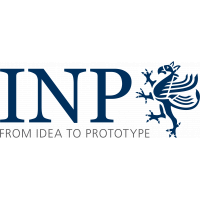The self-organized behaviour (locked mode) of filaments in the non-thermal atmospheric pressure plasma jet (ntAPPJ) couples a spatial patterning of the discharge (helical symmetry) and a regular motion (steady rotation). The dataset represents the mean rotation frequency of filaments in the capillary with a diameter of 4 mm and the corresponding geometric characteristics: helicality and/or filament inclination angles were measured along with the gas temperature under varying discharge conditions (electric power and argon flow rate).
| Field | Value |
|---|---|
| Group | |
| Authors | |
| Release Date | 2019-06-11 |
| Identifier | 001a090e-9e86-4983-a1e9-e99280be0e6e |
| Permanent Identifier (DOI) | |
| Permanent Identifier (URI) | |
| Is supplementing | |
| Plasma Source Name | |
| Plasma Source Application | |
| Plasma Source Specification | |
| Plasma Source Properties | Non-thermal atmospheric pressure plasma jet (capacitively coupled) operated in a self-organized regime (locked mode). Power: 7 to 9 W; Frequency: 27.12 MHz; Flow rate: 400 to 800 sccm argon; Electrodes: ring configuration, distance 5 mm, width 5 mm; Capillary: inner diameter 4 mm, outer diameter 6 mm |
| Plasma Source Procedure | The measurements occur 30 minutes after temperature conditioning of the plasma source for each parameter setting. |
| Plasma Medium Name | |
| Plasma Medium Properties | Flowrate: 0.4 to 0.8 slm; Pressure: 1 bar; Temperature: 300 to 1000 K; Purity: argon 6.0 |
| Plasma Medium Procedure | Standard conditions of the argon gas are assured. |
| Plasma Diagnostics Name | |
| Plasma Diagnostics Properties | The filament behaviour has been visualized optically by means of imaging. The LSD set-up consists of a He-Ne laser (Linos) and a high-speed CMOS camera (Photon Focus). The image sensor has 1312×1082 pixels, pixel size 8 µm. The laser beam is classified as 3 A, 632.82 nm, cw. The output power of the laser is 0.6 W. The laser beam is specified by the spot diameter of 490 µm and beam divergence of 1.7 mrad. The parameters of the beam enable to characterize filament structures with diameters down to approx. 100 µm. |
| Plasma Diagnostics Procedure | The displacement of the laser spot on the image sensor of the camera is monitored directly. The laser beam is led perpendicular through the effluent region, close to the nozzle of the capillary (z = 0 mm). The output power of the laser is sufficiently low to avert any influence of the beam on the properties of the plasma jet. Deflection of the laser beam due to refraction in the gradient field of the refractive index is recorded at a distance of 80.6 cm from the plasma jet at 10 kHz sample frequency. |
| Language | English |
| License | |
| Public Access Level | Public |
| Contact Name | Schäfer, Jan |
| Contact Email |
Data and Resources
- Correlation of helicality and rotation frequency at 7 Wcsv
The data table shows the correlation of helicality and rotation frequency of...
Preview Download - Correlation of helicality and rotation frequency at 8 Wcsv
The data table shows the correlation of helicality and rotation frequency of...
Preview Download - Correlation of helicality and rotation frequency at 9 Wcsv
The data table shows the correlation of helicality and rotation frequency of...
Preview Download - Correlation of helicality and rotation frequency - images of filamentspng
Images of filaments for different power and gas flow rate. From these images...
Download

![[Open Data]](https://assets.okfn.org/images/ok_buttons/od_80x15_blue.png)